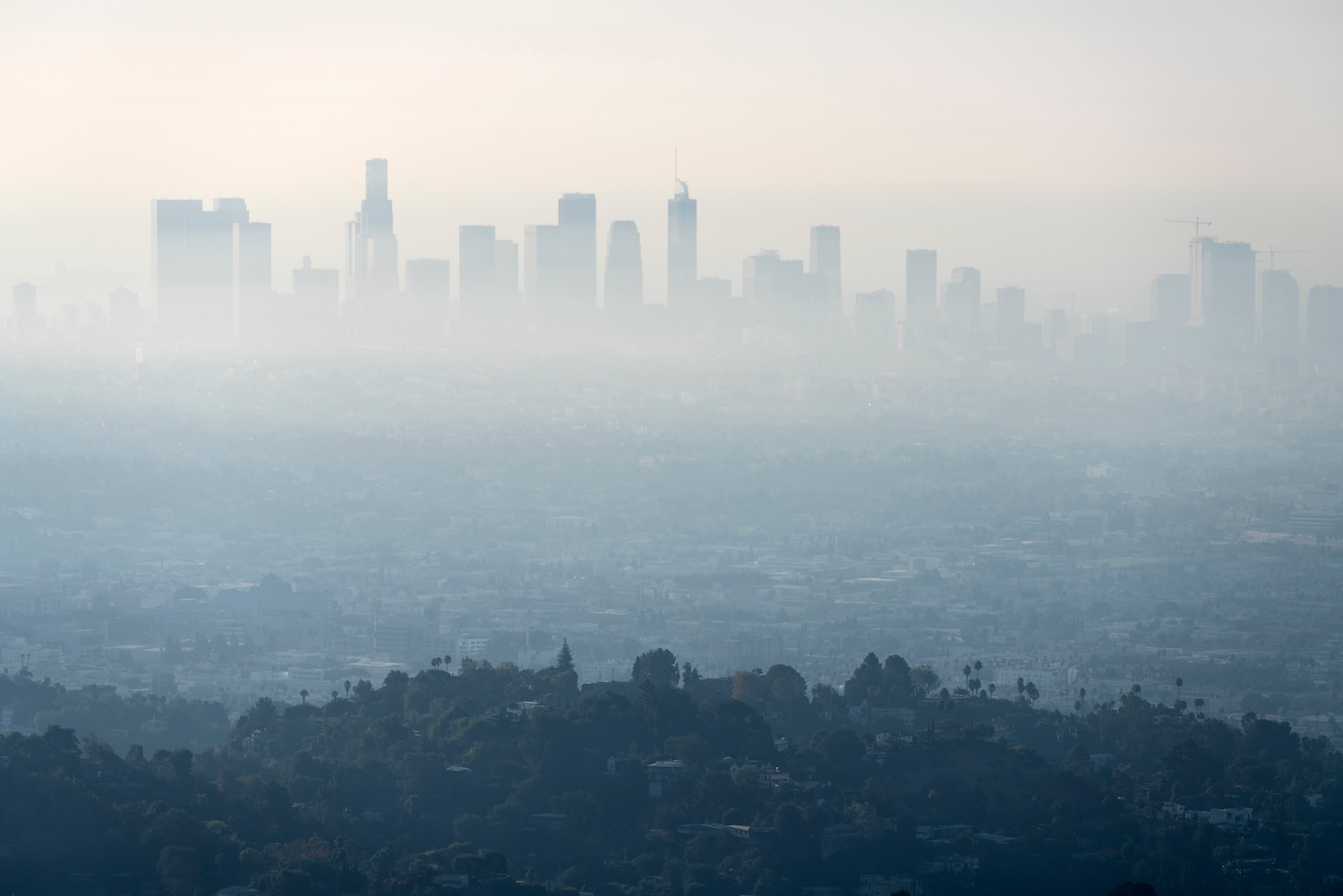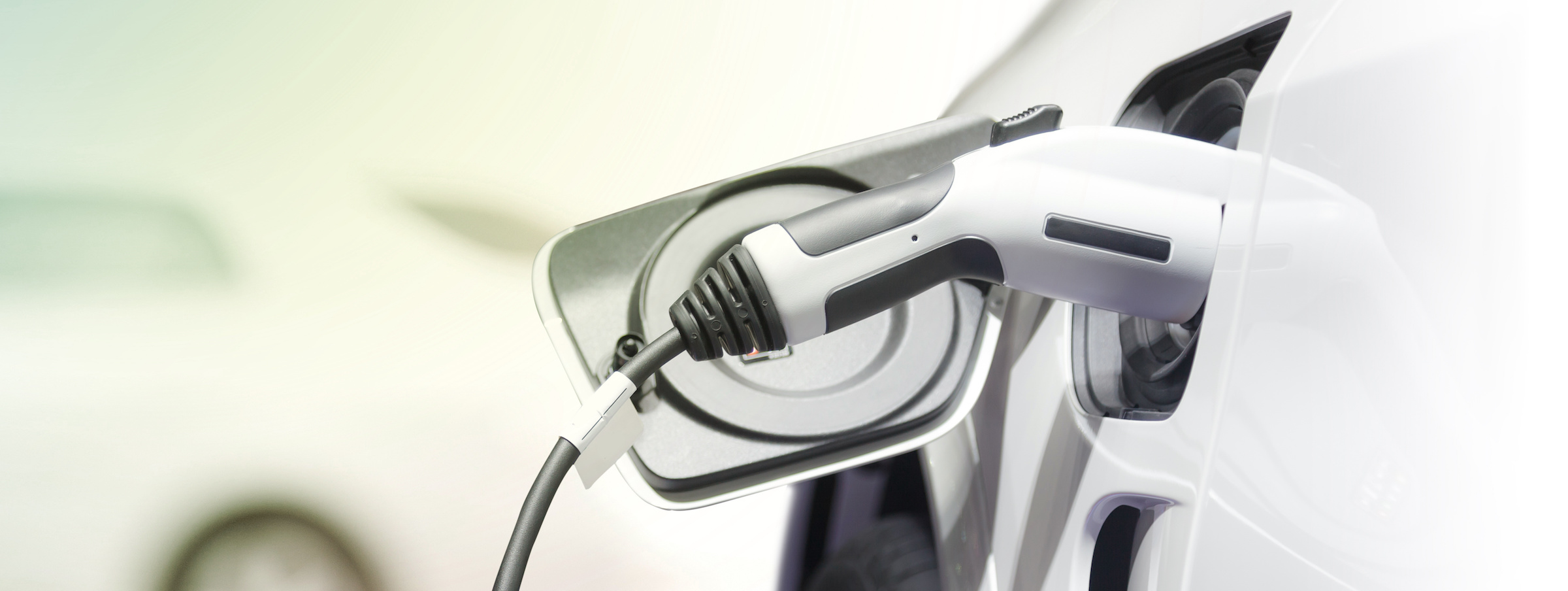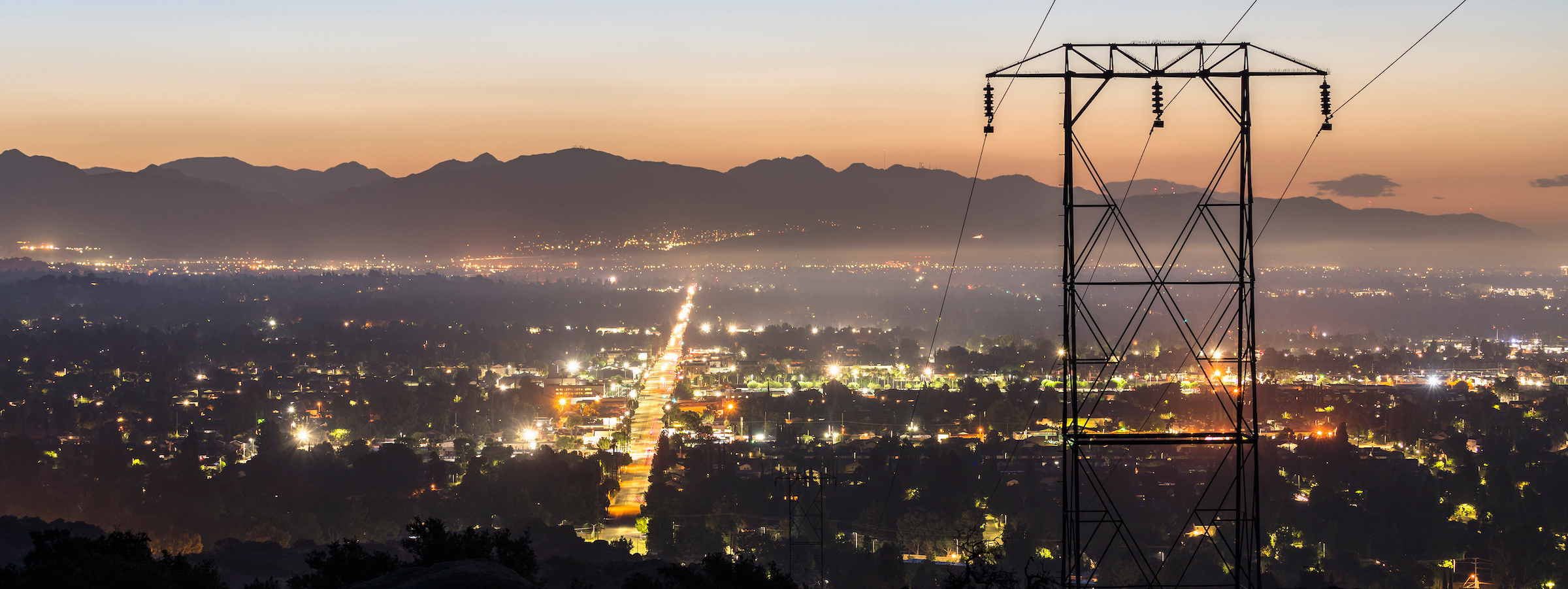Download the fact sheet →
California is moving toward a clean energy future. As set forth in SB 100, California aims to supply 100 percent of its electric retail sales with renewable and zero-carbon resources by 2045. Meanwhile, continued progress on state policies can help us to power more of our lives with cleaner, cheaper energy.
The next decade should see major increases in renewables driven by these state policies, overwhelming public support for a clean energy transition, market changes that are making clean energy cheaper and more scalable than other sources, and major breakthroughs in battery storage technology.
But the Oil & Gas industry is seeking to delay this transition to clean energy by opposing renewable energy generation.
Industry groups and the right-wing media center their attacks on the reliability of a renewables-centered electric grid, painting a dire picture of blackouts and grid failure. When the Texas grid went offline during a severe winter storm in 2021, for example, industry groups blamed frozen wind turbines. In reality, however, Oil & Gas infrastructure was exposed as the primary cause for the outage and the delays in reestablishing power.
To be sure, the intermittency of wind and solar power, which can vary by time of day or by weather, is an issue that will need serious attention as we transform our grid. Efforts to get this process right and solve problems isn’t a reason to abandon clean energy.
In California, the industry’s arguments on reliability issues usually rely on the false premise that the state is trying to immediately ban fossil fuels in the electric grid (when, in fact, it is a gradual transition). They also ignore current technology advancements that are making clean energy cheaper and more abundant, and cherry-pick challenges that apply to individual forms of renewable energy rather than the more complementary whole.
Looking at the full picture, solar, wind, and batteries are a complementary mix, and innovative clean energy technologies are increasing our capacity to generate and store electricity, which will continue to improve grid reliability.
Transitioning to clean energy options will also offer consumers a more reliable energy mix across the board. The price of fossil fuels is inherently volatile and is vulnerable to price gouging. The cost of gas has skyrocketed in recent years — most recently due to Russia’s invasion of Ukraine — while clean energy sources and storage options have become dramatically cheaper over the last decade. Investing in distributed clean energy and battery storage capacity will ensure renewable energy is available to consumers around the clock and throughout the year. And increasing the state’s battery storage capacity will make California much more resilient in the face of power outages and climate change- related natural disasters.
The positive impacts can be especially robust in the decade ahead, as California seeks to reach majority renewables, without having to address the last-mile challenges of reaching full 100 percent closer to 2045.
If we stay focused on promoting the growth of battery storage both at home and at scale, and promote a diverse, balanced renewable energy portfolio — we will realize climate, public health, and economic benefits. If we allow the fossil fuel industry to alter our path, we will get a larger dose of negative fossil fuels impacts such as price spikes, pollution, climate impacts, and fossil fuel’s own reliability risks.
Achieving our energy reliability goals is within reach — as long as we stay focused on renewables and storage and don’t get distracted by the Oil & Gas industry’s attempts to keep us addicted to fossil fuels.

Summary Points
The Oil & Gas industry and conservative allies continue to deploy misleading messages around grid reliability as part of their efforts to delay California’s transition to clean energy. Building out renewable energy and storage capacity by increasing solar, wind, and battery storage is the key to a strong, reliable grid in California.
Solar, wind, battery storage, and related clean energy technologies are a complementary mix and can strengthen the California grid and energy picture over the next decade.
Intermittency of renewable energy is a challenge, but a balanced renewable portfolio with more battery storage has huge potential for reliability on many fronts, protecting us from fossil fuel costs spikes, weather disruptions, and major heat events.
In the next decade, California is seeking to double our clean energy to cover around 75 percent of our energy needs. We’re adding more wind as solar as those become the cheapest forms of energy.
Electric vehicles, batteries, and other emerging technologies will create a more resilient clean energy future.
Battery technology is taking off and has already become a game changer, allowing us to create a cleaner, smarter, and more reliable energy system. This and related investments in grid technology should be California’s reliability focus.
Electric vehicles are essentially huge batteries and can be charged at low demand times. EVs can be charged during the daytime using solar and then “load shift” that energy to make it available during the evenings.
The technology to allow vehicles like electric school buses, trucks, and cars to send electricity back out to the grid is available now and can provide backup energy to communities when they’re not being used.
As we saw in recent heat waves, California is also making progress with demand response to address moments of strain on the power grid.
We need to break the cycle.
The industry’s reliability arguments usually ignore the emerging role of battery storage, and pretend like the state is switching off of fossil fuels overnight. We need to move quickly on renewables, but the efforts to reach full 100 percent won’t be the main challenge for more than ten years.
Oil & Gas executives have been caught in overt deception, like during the Texas energy crisis, when they tried to blame renewables and wind for the energy crisis, but frozen natural gas pipelines proved to be the real cause of prolonged power outages — and, in the end, renewables recovered first and were able to start generating power again quicker.

I. COMPLEMENTARY CLEAN ENERGY
Building out complementary clean energy sources and battery storage capacity and transmission should be the focus of California’s approach to creating a reliable and renewables-based grid.
- Diversified clean energy sources — including wind, rooftop and utility-scale solar, hydropower, and geothermal — and storage create a complementary energy mix that will reduce emissions, establish more flexibility in the power system, and maintain a reliable grid.
- California can reliably reach 85 percent clean energy by 2030, in-depth modeling has shown, by ramping up offshore wind and geothermal power production in addition to utility-scale solar.
- As the technology rapidly progresses, batteries are revving up in their usefulness and potential for storage capacity. Batteries allow us to store energy to power our homes, cars, and economy with clean, renewable energy at all hours — making them key to increasing grid reliability.
- The cost and capacity of batteries is changing quickly. It’s driving a revolution in clean energy in California. According to Michael Wara, policy director of the Sustainability Accelerator at Stanford University, “If we can keep [our current rate of battery deployment] up, it’s not going to be very many years until [grid failure] is just a rearview mirror thing.”
- Innovation in clean energy technology and battery storage is revolutionizing California’s energy grid. “Vehicle to grid” (V2G) uses electric vehicles to store energy and send it back to the grid. Some school districts are already using electric school buses to improve local grid reliability.
- In order to meet our long-term clean energy goals, California will need to double down on generating and storing renewable energy from complementary sources, including utility-scale and rooftop solar, as well as offshore wind.

II. ELECTRIC VEHICLES
Electric vehicles (EVs) are not only a climate game changer, they will also help improve grid reliability.
- EVs don’t currently have a large impact on California’s electric grid. California had roughly 800,000 registered EVs as of January 2023 and they account for less than 1 percent of electricity demand.
- The California Air Resources Board (CARB) estimated that even if there are 5 million EVs in California by 2030, they would only account for 7 percent of the state’s annual electricity usage — and only 1 percent of peak demand.
- Many EV owners can schedule when they charge their vehicles, in the evenings or off of peak times.
- Increasing EVs will make California’s grid more resilient, as innovative bidirectional EV charging technologies (V2G) that supply electricity back to the grid become more widespread.
- California is experiencing more extreme heat events due to climate change, and residents are increasingly encouraged to conserve electricity during those times. EV batteries can store excess renewable energy and pull it back into use exactly when it is needed — such as during periods of high electricity demand.

III. CLEAN ENERGY
Solar, wind, and other clean energy sources are now cheaper than fossil fuels, including gas in many situations.
- It’s now cheaper to build new solar plants than it is to operate existing coal plants. And, due to the price volatility of gas and the decreasing price of renewables and battery storage, it’s now cheaper to switch from coal to clean energy than it is to switch from coal to natural gas.
- Solar and wind are now cheaper than gas in many situations. As solar and wind manufacturing continues to get more efficient, clean energy options are still seeing costs fall, with battery storage costs set to drop dramatically as well. The same cannot be said for gas or other fossil fuels.
- In October 2022, utility-scale solar power was about 33 percent cheaper than gas-fired power, and onshore wind was 44 percent less expensive than gas- fired power. While gas prices surge and fluctuate, the cost of wind and solar has decreased due to industry innovation and federal and statewide climate legislation in the US.
- In 2021, the price of utility-scale solar decreased approximately 12 percent. Both solar and storage costs have fallen over the past decade. The price of residential solar (which also saves on transmission infrastructure) was reported at $2.65/W in 2021, down from $7.53/W in 2010. Utility-scale solar cost $0.89/W in 2021 compared to $5.66/W a decade prior.
- Fossil fuel costs are volatile, and recently, they’ve hit an all-time high. The US Energy Information Administration estimates that the 47 percent of US households that primarily use natural gas for heating will spend an average of 28 percent more in 2022 than they did in 2021.

IV. CLIMATE CHANGE-RELATED EVENTS
Climate change-related heat events are increasing in intensity and frequency. California avoided blackouts during the unprecedented heat wave in 2022, demonstrating the potential for better grid management.
- September 2022 saw the most brutal heat wave in California’s history, with high-temperature records being set across the state. Sacramento hit 116 degrees, surpassing the 1925 record of 114 degrees.
- The state was close to suffering from rolling blackouts during the 2022 heat waves but avoided it because several thousand megawatts of battery storage kicked in to provide energy, helping to stabilize the situation, and because Californians responded to the grid operator’s request to conserve electricity during peak hours. This type of demand response — with incentives, communications, and technology — has the potential to address high-demand days.
- California has significantly increased its battery storage capacity over the past few years, which allowed it to keep power going during the 2022 heat waves, even when solar power dropped off after dark. Strides are also being made in demand response programs that pay consumers to stop using power when the grid is stressed.
- In February 2021, the Texas power crisis made grid reliability a hot button issue, but Texas’ grid is powered primarily by gas facilities that are not adequately winterized, which directly led to blackouts across the state. California isn’t the only state where renewables have provided critical energy to the grid during an extreme weather event: solar power provided some of the only reliable energy after Hurricanes Fiona and Ian struck Puerto Rico and Florida in 2022.
- On September 6, 2022, California’s battery output reached 2.99 megawatts — which is higher than the output from the state’s largest single generator of energy, the Diablo Canyon nuclear plant.
- Experts agree: Diversifying renewable energy and increasing battery storage capacity is California’s long-term solution to this type of unprecedented heat wave.

V. RENEWABLES & STORAGE
The state can’t afford to lose its focus on building out renewables and storage.
- California still needs more solar, offshore wind, and battery storage capacity to meet the state’s environment and energy needs in a variety of ways. We need to move faster, not slower, on clean energy.
- In 2020, 34.5 percent of California’s electricity came from renewables. Our leaders need to hone in on facilitating California’s transition efforts over the next 10 years in order to meet our goal of 100 percent clean electricity by 2045.
- Draft plans laying out the state’s transition to a fully reliable, clean energy grid already exist. The California Independent System Operator (CAISO) released a 20-year plan for build-out that would make California’s energy grid much more reliable and allow us to power the grid with clean energy in order to meet the 2045 climate goals set forth in SB 100.
- We need to get to the point where we can meet our daily energy needs with 100 percent clean energy — but we have a long way to go, and we can’t let the oil and gas industry slow us down. Increasing California’s clean energy capacity is the way to meet our energy goals while also increasing our grid’s reliability.
Conclusion
The Oil & Gas industry and its executives want us to focus on issues that will be more relevant in 2040 than in 2023 — or even 2030. But California is trying to reach 100 percent clean energy (and the interim goals of 90 and 95 percent). We need to be focusing on increasing our renewable energy and storage capacity, not taking detours back into fossil fuels.
Once we meet our initial battery goals, our reliability will shoot up and we’ll be more independent. But the reality is, our situation now isn’t very reliable — methane gas prices are volatile and only increasing, and consumers bear the price burden.
It’s time to break the cycle: California is facing a horrific reality of catastrophic wildfire, drought, and extreme heat that are caused by our dependence on polluting Oil & Gas. If we don’t move toward a clean energy future, we risk facing even more dangerous and desperate climate impacts.
California has proven that, by increasing renewable energy from sources like wind and solar, we can improve our ability to manage extreme weather. But our leaders need to continue prioritizing policies that ramp up solar, offshore wind, and battery storage projects — not fossil fuel solutions. As always, Oil & Gas executives are putting their profits ahead of Californians’ best interests, when the facts show that clean energy is cheaper and more reliable.
Oil & Gas companies are doing the same: stalling progress on renewables and electric vehicles while trying to carve out special deals and expensive niches that would ensure Californians pay more in expensive infrastructure and energy costs over time. Companies like SoCalGas and WSPA have invested heavily in lobbying against climate-friendly legislation and policies related to California’s transition to electric vehicles.
They’re ignoring the fact that California isn’t aiming to power our economy with clean energy until 2045, and that for the next decade, we will deploy a mix of renewables/clean energy. Slowing down California’s transition to renewables certainly isn’t going to make our energy economy more reliable.

